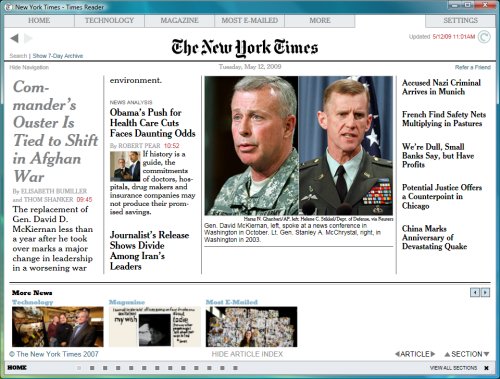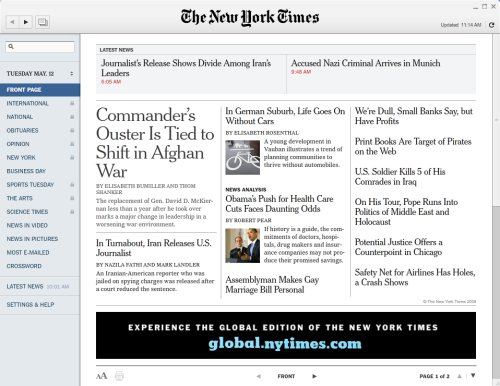There is an alarming report here from James Montgomerie, who has developed an application for the iPhone called Eucalyptus. It displays public domain texts hosted at Project Gutenberg.
Apple has refused to allow his application to be placed into the App Store, which in effect means nobody can buy it or use it. The reason: one of the texts on Project Gutenberg is the Kama Sutra, which Apple’s assessors consider pornographic.
It’s doubtful reasoning. Eucalyptus is a client and does not contain the contentious text directly; it is no different in this respect from Safari, the iPhone’s web browser, which can also also display the Kama Sutra, or indeed many far more objectionable web pages.
Still, it’s the wider issues that are more interesting here. Montgomerie writes:
I suspect that no-one at Apple knows how genuinely torturous the app store approval process is for developers personally after a rejection. When they hold the key to the only distribution pipe for something you’ve spent a lot of your time on – in my case a year – something you’re hoping could provide you with a livelihood – and polite email enquiries are not replied to – not even with an autoresponder, it is extremely frustrating. I don’t think I’ve ever felt as powerless in my life (and I’ve had to deal with US immigration authorities…). I think anyone that knows me would confirm that I’m a very level-headed person, but this is the only thing in my adult life I can recall losing sleep over (although perhaps that’s also a consequence of being otherwise lucky in life so far).
Let’s do a bit of what-if. What if Microsoft exerted equal control over what applications were allowed on Windows? What if Apple extended its iPhone control to any Mac computers? Unacceptable, could never happen, you might think. Sure, but it if is unacceptable in that wider context, is it not unacceptable on the iPhone as well?
Apple is not the first company to lock down a platform. Locked mobile phones have done this to some extent for years. Games consoles like Xbox and Playstation do it. Apple is taking heat because of its success in creating a device that users want to use as a platform for all kinds of applications; potentially, in some future version, it may be able to do most of the things for which we currently use laptops. Therefore we should be concerned both about the way Apple is using its control over iPhone distribution, and more fundamentally that it has that level of control at all.
Fortunately Apple does not control the Internet; and Montgomerie has done the right thing by appealing to public opinion. Apple’s PR machine will take note and no doubt resolve the immediate case.*
Nevertheless, this story and others like it are a real concern. Perhaps your next phone should run Android?
*UPDATE this is exactly what happened:
Earlier today I received a phone call from an Apple representative. He was very complimentary about Eucalyptus. We talked about the confusion surrounding its App Store rejections, which I am happy to say is now fully resolved. He invited me to re-build and submit a version of Eucalyptus with no filters for immediate approval, and that full version is now available on the iPhone App Store.
See also: Friendly to users, hostile to competition: get ready for more app stores



